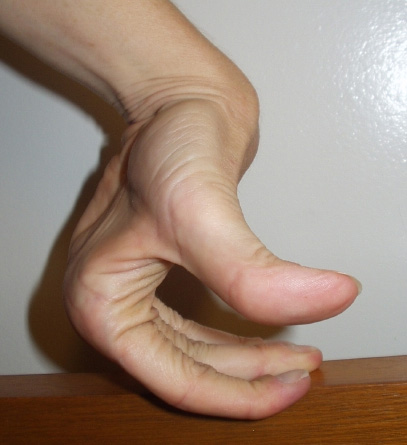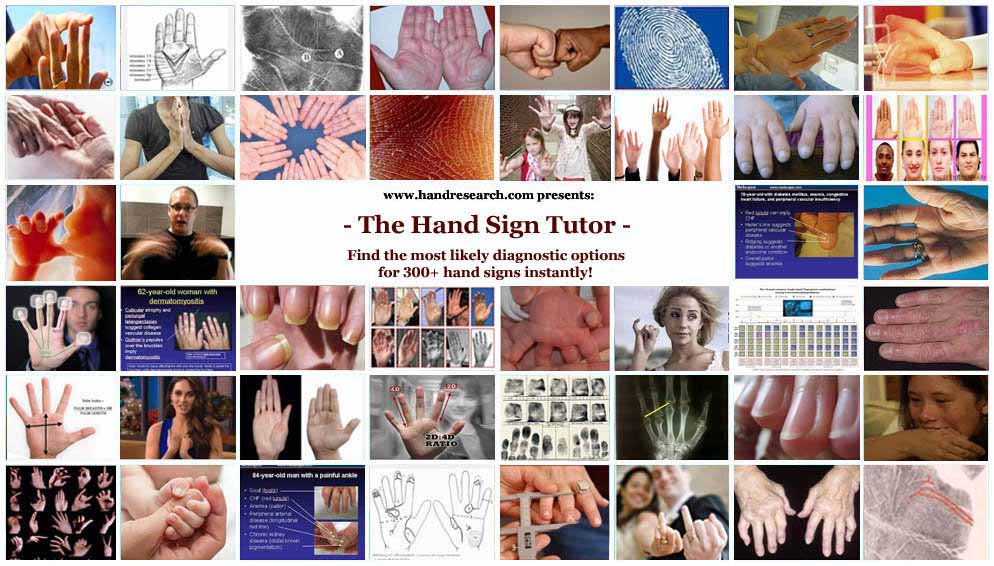Most likely diagnostic options for hyperextensible finger joints - not to be confused with double-jointed thumbs (ranked by 'weight' for the general population):
- ASSOCIATED MEDICAL CONDITIONS:
• joints hypermobility syndrome [~75% | 1:50 | weight: 0,15]
• trisomy 21 (= Down syndrome) [~80% | 1:700 | weight: 0,01]
• fragile-x syndrome [~60% | 1:4K | weight: 0,0015]
• cri-du-chat syndrome [?% | 1:30K | weight: ?]
- ASSOCIATED PSYCHOLOGICAL CONDITIONS:
• Beyond hyperextensible finger joints, a condition involving 'very flexible fingers' has been reported to be about 2.5x more common (62,5%) in a group of extraverted Dutch students, who score very high for the Big Five personality dimension Extraversion (the 1997 study also reports that 'stiff fingers' have been observed twice more often (25%) in Extraversion low scorers).
[1st figure = prevalence hand sign in condition | 2nd
figure = prevalence condition in GP | 3rd figure =
estimated hand sign weight for condition relative
to GP (>0,5 = present in majority of GP)]
|

Quick summary:
hyperextensible finger joint is a relatively common condition that is present in a small minority of the general population;
the condition is especially frequently present in joints hypermobility syndrome, trisomy 21 & fragile-x syndrome.
[In every 100 hyperextensible finger joints cases in the general population (GP) you can expect to find about 15 joint hypermobility syndrome cases, 1 trisomy 21 case, etc.]
|

